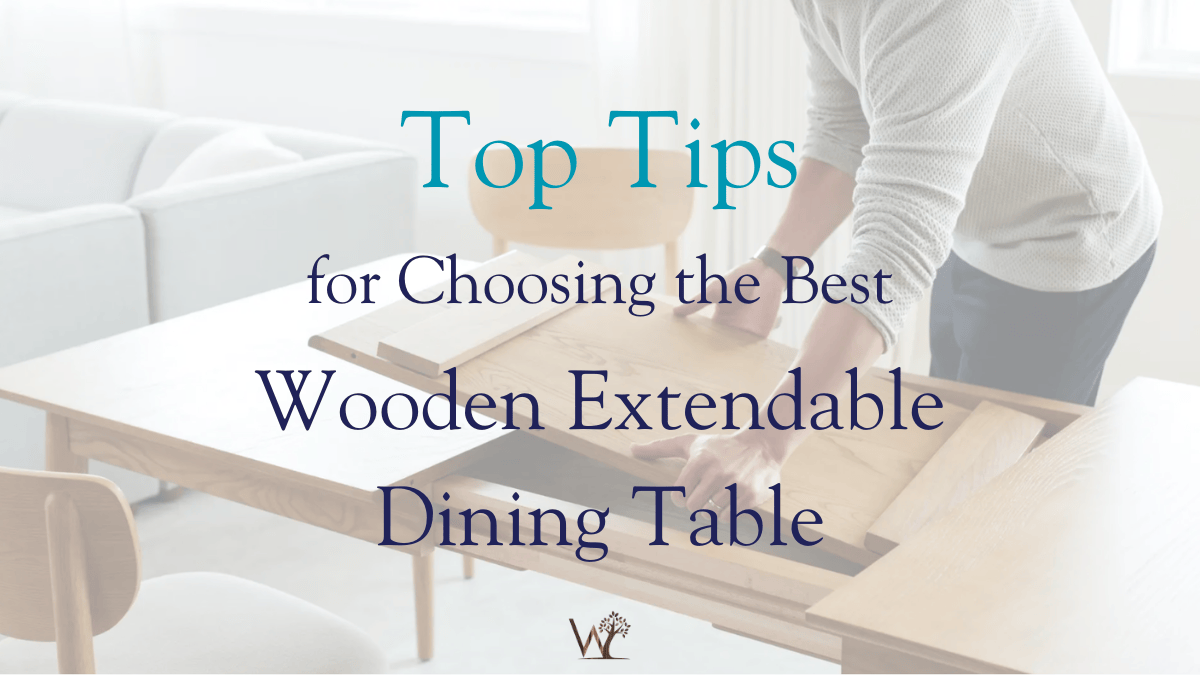A wooden table top isn’t just a surface—it’s the soul of your space. From rustic farmhouses to minimalist lofts, these organic canvases anchor memories, meals, and moments. Yet, choosing the right one? That’s where artistry collides with practicality.
Imagine a table that resists stains, scoffs at scratches, and ages like a fine wine. Or one whose grain whispers stories of ancient forests. The stakes are high: a misstep could mean warped edges or faded glory. But get it right, and you’ll craft a heirloom.
This guide unlocks the alchemy of wood species, finishes, and care rituals. Ready to transform splinters into splendor? Let’s begin.
I. Types of Wood for Wooden Table Tops
Choosing the right wood for your table top is crucial for both aesthetics and durability. Let’s delve into the characteristics of hardwoods and softwoods to help you make an informed decision.
1. Hardwood vs. Softwood: Which Is Best?
Hardwoods, such as oak, maple, and walnut, are derived from angiosperm trees that shed their leaves annually.
These woods are typically denser, offering enhanced durability and resistance to wear and tear. For instance, oak is renowned for its strength and prominent grain patterns, making it a popular choice for furniture.
In contrast, softwoods like pine and cedar come from gymnosperm trees, which are usually evergreen.
Softwoods generally have a lighter density, making them easier to work with but less durable than hardwoods. Pine, for example, is favored for its affordability and ease of use, though it may dent more easily compared to hardwoods.
Comparison of Hardwoods and Softwoods:
| Feature | Hardwoods (e.g., Oak, Maple, Walnut) | Softwoods (e.g., Pine, Cedar) |
|---|---|---|
| Density | Higher density; more durable | Lower density; less durable |
| Growth Rate | Slower-growing; more expensive | Faster-growing; more affordable |
| Grain Pattern | Complex and varied | Simpler and more uniform |
| Workability | Harder to work with; may require specialized tools | Easier to work with; suitable for DIY projects |
| Common Uses | High-quality furniture, flooring | Construction, paper products |
Note: This table provides a general comparison; individual wood species may vary.
When deciding between hardwood and softwood for your table top, consider factors such as durability, aesthetic preferences, and budget. Hardwoods offer longevity and a rich appearance, while softwoods provide a cost-effective and workable alternative.
2. Popular Wood Choices for Table Tops
Selecting the best wood for your table top involves balancing durability, aesthetics, and maintenance. Here are some top choices:
- Oak: Known for its strength and durability, oak features a prominent grain pattern that adds character to any table. It’s resistant to scratches and dents, making it ideal for high-traffic areas.
- Maple: Maple offers a smooth, fine grain and a light color, providing a clean and modern look. It’s a hard, dense wood that resists wear, making it suitable for daily use.
- Walnut: With its rich, dark hues and straight grain, walnut exudes elegance. It’s strong yet relatively lightweight, making it a favorite for high-end furniture.
- Cherry: Cherry wood boasts a fine, straight grain with a smooth texture. Its rich, reddish-brown color deepens over time, adding warmth to any space.
- Teak: Teak is renowned for its exceptional durability and water resistance, making it ideal for both indoor and outdoor tables. Its straight grain and rich golden-brown color add a touch of luxury.
Each of these woods offers unique benefits, so consider your specific needs and aesthetic preferences when making a selection.
3. Eco-Friendly Wood Options
For those of us concerned about sustainability, eco-friendly wood options are a great choice. Sustainable wood sourcing ensures that the wood is harvested responsibly, promoting forest regeneration and biodiversity. Look for certification labels such as FSC (Forest Stewardship Council) to ensure the wood meets environmental and social standards.
Reclaimed wood table tops are another eco-friendly option. Using reclaimed wood not only reduces demand for new timber but also adds a unique, rustic charm to your furniture. Each piece carries its own history, often showcasing weathered textures and rich patinas that can’t be replicated.
By choosing sustainable or reclaimed wood, we can enjoy beautiful furniture while minimizing our environmental impact.
II. Choosing the Right Thickness for a Wooden Table Top
The thickness of your wooden table top significantly influences its durability, functionality, and aesthetic appeal. Let’s explore the recommended thicknesses for various uses and how thickness affects style and longevity.
1. Recommended Thickness for Different Uses
The ideal thickness for a wooden table top varies depending on its intended use:
- Dining Tables: A thickness of 1 to 1.25 inches is commonly recommended. This provides a sturdy surface suitable for daily meals and gatherings.
- Coffee Tables: Typically, a thickness of 0.75 to 1 inch suffices, offering a balance between durability and a sleek appearance.
- Work Desks: For desks, a thickness of 1.25 to 1.5 inches is advisable to support the weight of equipment and withstand regular use.
Choosing the appropriate thickness ensures that the table top can handle the demands of its specific function while maintaining a proportionate look.
2. How Thickness Affects Style and Durability
The thickness of a table top not only impacts its strength but also its visual appeal:
- Visual Appeal: Thicker table tops convey a sense of solidity and luxury, often complementing traditional or rustic designs. Conversely, thinner tops offer a sleek, minimalist look, suitable for modern styles.
- Practical Strength: Thicker tops are inherently more robust, reducing the risk of warping or sagging over time. This is particularly important for larger tables or those expected to bear significant weight.
Balancing aesthetics with functionality is key. While a thicker top may be more durable, it’s essential to ensure it aligns with the desired style and doesn’t overwhelm the space.
III. Best Finishes for Wooden Table Tops
Selecting the appropriate finish for your wooden table top is essential to enhance its appearance and ensure its longevity. Let’s explore the various types of finishes and how to choose the most durable one for daily use.
1. Types of Wood Finishes
When it comes to finishing wooden table tops, several options are available, each offering distinct benefits:
- Oil-Based Finishes: Tung oil and linseed oil penetrate deeply into the wood, highlighting the natural grain and providing a warm, rich appearance. These finishes are relatively easy to apply and repair, making them a popular choice for many.
- Water-Based Polyurethane and Lacquer: These finishes form a hard, protective surface that resists scratches and moisture. They dry quickly and emit fewer odors compared to oil-based options, making them suitable for indoor environments.
- Wax Finishes: Applying wax imparts a natural, low-sheen look to the wood. While it offers minimal protection against moisture and wear, wax is excellent for achieving a rustic or antique aesthetic. Regular reapplication is necessary to maintain its protective qualities.
Each finish has its unique advantages, so consider the desired look and level of protection when making a selection.
2. Choosing a Durable Finish for Daily Use
For tables subjected to daily wear and tear, selecting a durable finish is crucial:
- Scratch-Resistant Coatings: Opt for finishes like polyurethane, which create a hard, resilient surface capable of withstanding scratches and dents. This is particularly important for high-traffic areas such as dining rooms.
- Waterproofing: In spaces like kitchens or outdoor areas, it’s essential to protect the wood from moisture. Applying a waterproof finish prevents water damage and extends the table’s lifespan.
- Polishing for Longevity: Regular polishing not only enhances the table’s shine but also adds an extra layer of protection against daily wear. Using appropriate polishing products can help maintain the finish and keep the wood looking its best.
By carefully selecting and maintaining the finish, you can ensure your wooden table top remains both beautiful and durable for years to come.
IV. How to Protect a Wooden Table Top?
Preserving the beauty and integrity of your wooden table top requires proper protection and maintenance. Let’s delve into effective methods to seal and care for your table.
1. Sealing Wooden Table Tops for Longevity
Proper sealing is vital to safeguard the wood against moisture, stains, and daily wear. Here’s a step-by-step guide to effectively seal your wooden table top:
- Prepare the Surface: Begin by sanding the table surface with fine-grit sandpaper to create a smooth, even base. This step ensures better adhesion of the sealant.
- Clean the Surface: After sanding, thoroughly clean the table to remove any dust or debris. A clean surface is essential for a flawless finish.
- Apply the Sealant: Using a high-quality brush or cloth, apply the chosen sealant evenly across the table top. Follow the manufacturer’s instructions regarding application techniques and drying times.
- Allow to Dry: Let the sealant dry completely, as per the recommended time. This ensures the finish sets properly and provides maximum protection.
- Sand Between Coats: For optimal results, lightly sand the surface between coats to remove any imperfections and ensure a smooth finish.
- Apply Additional Coats: Depending on the desired level of protection, apply additional coats of sealant, allowing adequate drying time between each.
By following these steps, you can effectively seal your wooden table top, enhancing its durability and preserving its natural beauty.
2. Daily Maintenance Tips
Regular maintenance is key to prolonging the life of your wooden table top. Here are some practical tips:
- Cleaning Methods: Use a soft, damp cloth to wipe the surface, avoiding harsh chemicals that can damage the finish. For stubborn spots, mild soap can be used sparingly.
- Preventing Scratches and Water Damage: Place coasters, placemats, or tablecloths on the table to protect against scratches and spills. These simple measures can prevent unsightly marks and preserve the finish.
- Use of Protective Covers and Pads: For added protection, especially during heavy use or when the table is not in use, consider using protective covers or pads. This helps shield the surface from potential damage and extends the table’s lifespan.
Implementing these daily maintenance practices will help maintain the pristine condition of your wooden table top, ensuring it remains a cherished centerpiece in your home.
V. How to Clean a Wooden Table Top Naturally?
Maintaining cleanliness while preserving the integrity of your wooden table top can be achieved using natural cleaning methods. Let’s explore effective solutions and best practices.
1. Effective Natural Cleaning Solutions
Utilizing natural ingredients can effectively clean your wooden table without causing harm:
- Vinegar and Water Solution: Mix equal parts of white vinegar and water to create a gentle cleaning solution. Dampen a soft cloth with the mixture and wipe the table surface to remove dirt and grime.
- Lemon and Baking Soda for Tough Stains: For stubborn stains, sprinkle baking soda on the affected area and rub gently with a half-cut lemon. The natural acidity of the lemon, combined with the mild abrasiveness of baking soda, helps lift stains without damaging the wood.
2. Do’s and Don’ts of Cleaning Wooden Furniture
Proper cleaning habits are essential to maintain the appearance and longevity of your wooden table top. Here’s what to do—and what to avoid—when caring for your furniture.
- Do’s:
- Use a soft, lint-free cloth for everyday dusting to maintain the natural sheen and prevent scratches.
- Apply natural cleaning methods sparingly to avoid excessive moisture absorption that can lead to warping.
- Always wipe up spills immediately to prevent stains from setting into the wood grain.
- Don’ts:
- Avoid using harsh chemicals, bleach, or ammonia-based cleaners as they can strip the finish and damage the wood.
- Do not use excessive water when cleaning, as prolonged exposure can cause swelling or warping.
- Avoid abrasive scrubbers or rough sponges that can scratch the surface and ruin the finish.
VI. DIY Wooden Table Top Projects
Embarking on a DIY wooden table top project can be both rewarding and cost-effective. Let’s explore how to build your own table top, add creative finishes, and achieve a smooth, professional look.
1. Building Your Own Wooden Table Top
Creating a custom wooden table top allows you to tailor it to your specific needs and style preferences. Here’s a step-by-step guide to get you started:
- Gather Necessary Tools and Materials: You’ll need wood boards (such as knotty pine), a Kreg Jig for creating pocket holes, self-drilling screws, a sander with coarse and fine sandpaper, wood glue, clamps, and your choice of stain and finish.
- Cut the Boards to Size: Decide on the dimensions of your table top and cut the boards accordingly. For instance, a 55-inch length can be achieved by cutting 10-foot boards in half.
- Drill Pocket Holes: Use the Kreg Jig to drill pocket holes along the edges of the boards. This will allow for strong, seamless joints when assembling the table top.
- Assemble the Table Top: Apply wood glue to the edges of the boards and join them together using the pocket holes and screws. Ensure the surface is level and the joints are tight.
- Sand the Surface: Once assembled, sand the entire surface starting with coarse-grit sandpaper to remove any roughness, then progress to fine-grit for a smooth finish.
- Apply Stain and Finish: Choose a stain that complements your decor and apply it evenly. After the stain dries, apply a protective finish to seal the wood and enhance durability.
By following these steps, you can create a personalized table top that reflects your style and meets your functional needs.
2. Painting and Refinishing Ideas
Enhancing your wooden table top with paint or a new finish can breathe new life into an old piece or add a unique touch to a new build:
- Surface Preparation: Begin by thoroughly sanding the table top to remove any existing finish and create a smooth surface for painting.
- Primer Application: Apply a high-quality primer to ensure better paint adhesion and longevity.
- Choosing Paint Colors and Finishes: Select colors that complement your space. Matte finishes offer a contemporary look, while gloss finishes provide a more traditional appearance.
- Protective Topcoat: After painting, apply a clear topcoat to protect the surface from daily wear and tear.
These steps will help you achieve a durable and aesthetically pleasing finish on your wooden table top.
3. Sanding Wooden Table Surfaces for a Smooth Finish
Proper sanding is crucial for achieving a professional-looking table top:
- Selecting the Right Grit: Start with a lower-grit sandpaper (e.g., 60-grit) to remove rough areas, then progress to higher grits (up to 220-grit) for a smooth finish.
- Sanding Techniques: Always sand in the direction of the wood grain to prevent scratches. Use even pressure and check your work frequently to ensure uniformity.
- Final Touches: After sanding, wipe the surface with a damp cloth to remove dust before applying any stain or finish.
By carefully sanding your table top, you’ll create a flawless surface ready for finishing.
VII. Removing Stains from Wooden Table Tops
Stains can mar the beauty of wooden tables, but with the right techniques, many common stains can be effectively removed.
1. Common Stains and How to Remove Them
Different types of stains require specific approaches for removal:
- Water Rings: Often caused by condensation from glasses, these can be treated by applying a small amount of non-gel toothpaste to the stain, gently rubbing it in with a soft cloth, and then wiping it clean.
- Ink Stains: A mixture of baking soda and water can be applied to the stain. Gently rub the paste into the ink mark until it lifts, then wipe clean.
- Food Stains: For stubborn food stains, a solution of equal parts white vinegar and water can be used. Dampen a cloth with the solution, gently rub the stain, and then wipe dry.
These methods can help restore your wooden table top to its original beauty.
2. Preventing Future Stains
Preventative measures can keep your wooden table top looking pristine:
- Use Coasters and Placemats: Always place coasters under drinks and use placemats during meals to prevent direct contact with the table surface.
- Immediate Spill Cleanup: Wipe up any spills promptly to prevent liquids from penetrating the wood and causing stains.
- Protective Covers: Consider using a tablecloth or protective pad during activities that could potentially damage the table top.
By adopting these habits, you can maintain the appearance and longevity of your wooden table top.
VIII. Custom Wooden Table Tops: What You Should Know
Opting for a custom wooden table top offers a unique opportunity to tailor your furniture to your specific needs and aesthetic preferences. Let’s delve into the advantages of customization and the considerations when choosing between professional craftsmanship and DIY approaches.
1. Benefits of Customization
Customizing your wooden table top allows for:
- Tailored Sizes and Shapes: You can design a table that perfectly fits your space, whether it’s an expansive dining area or a cozy breakfast nook.
- Unique Finishes and Styles: Select from a variety of finishes and styles to match your decor, ensuring your table is a one-of-a-kind piece that reflects your personal taste.
These benefits make custom wooden table tops a compelling choice for those seeking both functionality and individuality in their furniture.
2. Working with a Professional vs. DIY
When deciding between crafting your own table top or hiring a professional, consider the following:
- Cost and Time Considerations: DIY projects can be cost-effective but may require significant time and effort, especially if you’re new to woodworking. Professionals can deliver high-quality results more quickly but at a higher cost.
- Design Flexibility: Professionals often have access to a wider range of materials and finishes, offering greater design flexibility. However, DIY projects allow for personal creativity and the satisfaction of building something yourself.
Weighing these factors can help you make an informed decision that aligns with your budget, skills, and desired outcome.
IX. Cost of Wooden Table Tops
Understanding the cost factors associated with wooden table tops can assist in making budget-conscious decisions without compromising on quality or aesthetics.
1. Factors That Affect the Cost
Several elements influence the price of wooden table tops:
- Type of Wood Used: Premium hardwoods like walnut or cherry are more expensive than softwoods such as pine. The choice of wood significantly impacts both the cost and durability of the table top.
- Custom vs. Mass-Produced Options: Custom-made table tops are tailored to specific preferences and often come at a higher price point compared to mass-produced alternatives.
By considering these factors, you can better understand the pricing landscape and make choices that fit your budget.
2. Budget-Friendly Alternatives
If you’re looking to save on costs, consider these options:
- Veneer vs. Solid Wood Options: Veneered table tops offer the appearance of solid wood at a fraction of the cost. They consist of a thin layer of wood applied over a different material, providing a similar aesthetic while being more budget-friendly.
- Choosing Reclaimed Wood for Affordability: Reclaimed wood is not only eco-friendly but also often more affordable than new lumber. It adds character and history to your table top, making it a unique and cost-effective choice.
Exploring these alternatives can help you achieve the desired look and functionality without overspending.
X. Rustic vs. Modern Wooden Table Top Styles
The style of your wooden table top can define the ambiance of your space. Let’s explore the characteristics of rustic and modern designs to help you choose the one that best suits your decor.
1. Characteristics of Rustic Wooden Table Tops
Rustic table tops often feature:
- Distressed Finishes and Reclaimed Wood Options: These elements add a sense of history and charm, creating a warm and inviting atmosphere.
- Design Inspirations for Farmhouse and Vintage Styles: Incorporating elements like chunky legs, natural edges, and hand-hewn marks can enhance the rustic appeal.
These characteristics make rustic table tops ideal for those seeking a cozy and timeless look.
2. Modern Wooden Table Styles to Consider
Modern table tops typically showcase:
- Sleek Lines and Minimalist Designs: Clean, straight lines and uncluttered surfaces create a contemporary aesthetic.
- Popular Wood Choices for Modern Aesthetics: Woods like maple or walnut with smooth finishes complement modern designs, offering a sleek and sophisticated appearance.
Choosing a modern style can provide a fresh and elegant look that aligns with current design trends.
Conclusion
A wooden table top is more than just a surface—it’s a statement of style and durability. Choosing the right materials, applying durable finishes, and maintaining it properly ensures longevity and timeless appeal. Whether you’re looking for custom wooden table tops or budget-friendly options, investing in quality is key.
At EverWoody, we offer premium wholesale wooden table tops tailored to your business needs. Contact us today to find the perfect solution that combines craftsmanship, durability, and unbeatable value.






